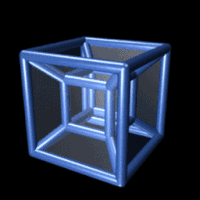
Photo from wikipedia
A cognitive map is an internal representation of the external world that guides flexible behavior in a complex environment. Cognitive map theory assumes that relationships between entities can be organized… Click to show full abstract
A cognitive map is an internal representation of the external world that guides flexible behavior in a complex environment. Cognitive map theory assumes that relationships between entities can be organized using Euclidean‐based coordinates. Previous studies revealed that cognitive map theory can also be generalized to inferences about abstract spaces, such as social spaces. However, it is still unclear whether humans can construct a cognitive map by combining relational knowledge between discrete entities with multiple abstract dimensions in nonsocial spaces. Here we asked subjects to learn to navigate a novel object space defined by two feature dimensions, price and abstraction. The subjects first learned the rank relationships between objects in each feature dimension and then completed a transitive inferences task. We recorded brain activity using functional magnetic resonance imaging (fMRI) while they performed the transitive inference task. By analyzing the behavioral data, we found that the Euclidean distance between objects had a significant effect on response time (RT). The longer the one‐dimensional rank distance and two‐dimensional (2D) Euclidean distance between objects the shorter the RT. The task‐fMRI data were analyzed using both univariate analysis and representational similarity analysis. We found that the hippocampus, entorhinal cortex, and medial orbitofrontal cortex were able to represent the Euclidean distance between objects in 2D space. Our findings suggest that relationship inferences between discrete objects can be made in a 2D nonsocial space and that the neural basis of this inference is related to cognitive maps.
Journal Title: Human Brain Mapping
Year Published: 2023
Link to full text (if available)
Share on Social Media: Sign Up to like & get
recommendations!